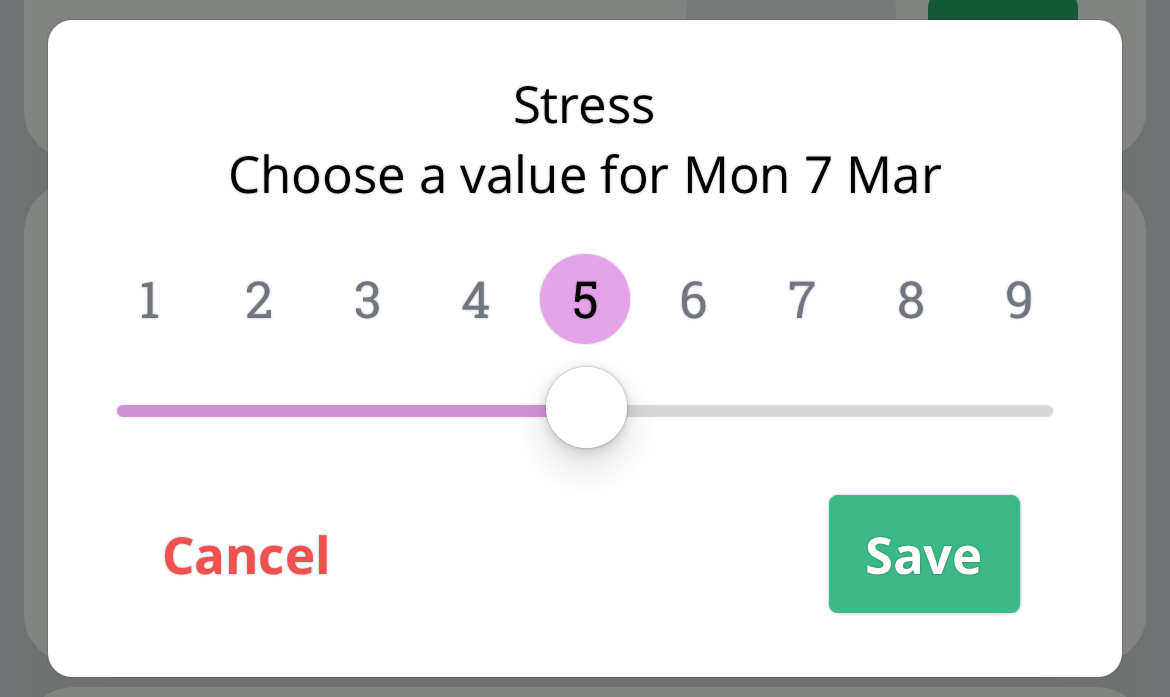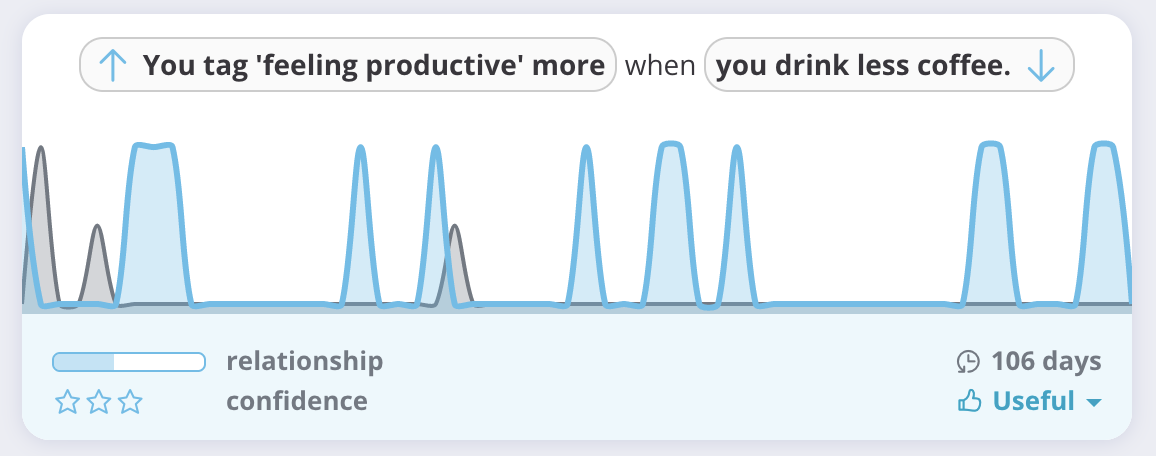Manual tracking help
Manual tracking lets you enter values into Exist for attributes you can't sync automatically from some other service. Where possible, you should choose to sync data automatically so you don't have to enter it yourself! You can connect integrations from the Services page, or in the settings of Exist for iOS.

Use the "Track something new" button on the Review tab in Exist for iOS or Exist for Android to create a new manually-tracked attribute.
You can choose an "official" template attribute, or create your own. We recommend choosing a template if there's one that fits your needs, because Exist can provide better analysis of template attributes, since we understand what that data is.
If you need something custom, you can choose from the following value types:
- quantity (e.g. 2 coffees)
- decimal (e.g. 12.5kg)
- duration (e.g. 1:35 in meetings)
- scale 1-9 (e.g. pain level)
- time of day (e.g. 9:15)
- percentage (e.g. 80%)
For quantity and duration attributes, the default value is zero. If you don't track anything for those attributes on a particular day, Exist will record a value of zero for you. For all the other value types, Exist won't record any value for you unless you enter one.

We need plenty of data before we can uncover relationships. Once you've tracked your new attributes for a few weeks, we'll be able to show you relevant correlations and trends. Keep tracking!
You can rename, deactivate, or delete your manually-tracked attributes from the settings screen of Exist for iOS and Exist for Android, or from your attributes page on the web.
So what should you track? Anything that you can't sync to Exist automatically, and that doesn't fit a custom tag. For example, if you just want to know if you had any coffee each day, you can use a custom tag to track the days you have coffee. But if you want to track the number of coffees you have each day, you could use a quantity attribute and manually enter the amount.
Anything that requires a number value is a good fit for manual tracking. Some common examples include the severity of medical symptoms, the dosage of medications you take, the number of times you complete a chore or habit each day, or how long you spend on a particular activity like study, work, or napping.
Subjective measures like energy, stress, or anxiety levels are a good for for a 1–9 scale. Remember that 9 is the highest amount of that attribute, so for example a stress level of 9 means maximum stress, and 1 means no stress at all. Which is hopefully how you feel about tracking your own values now! Good luck!